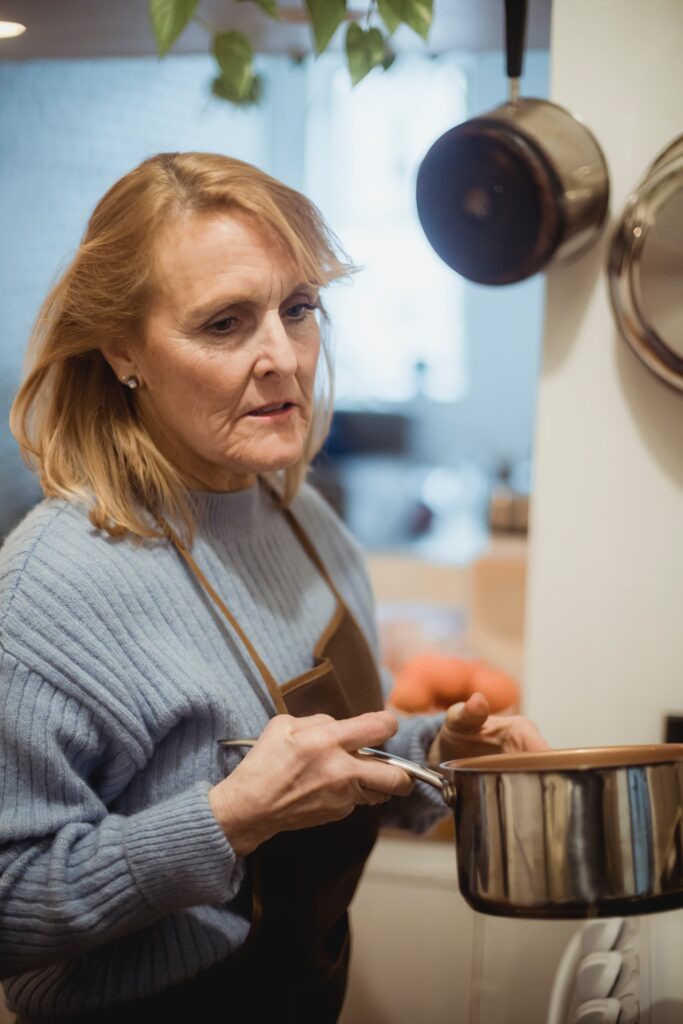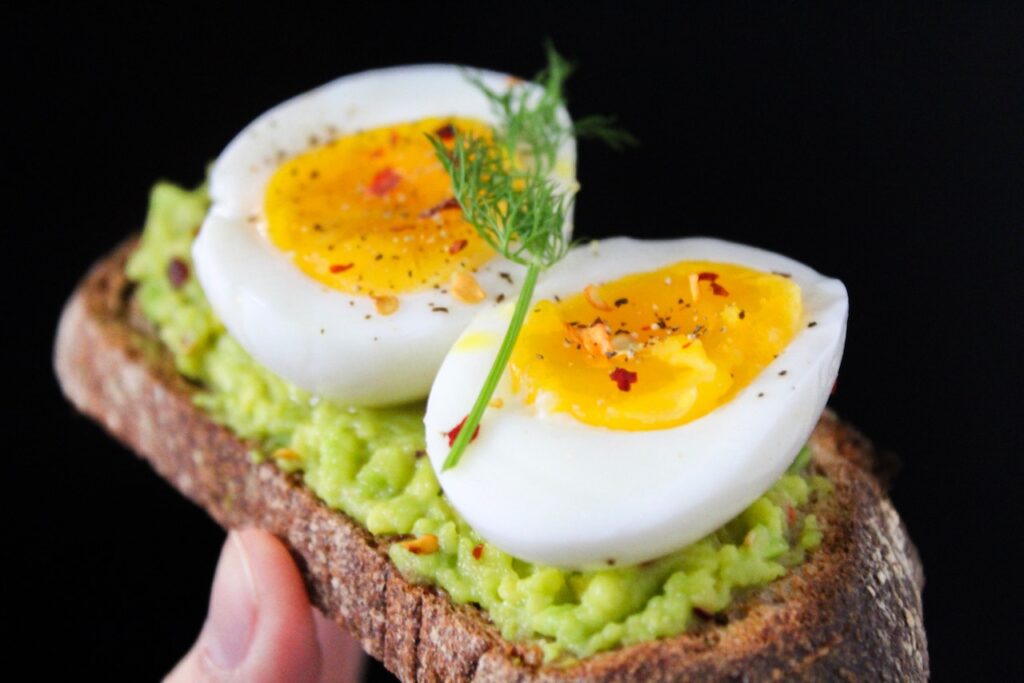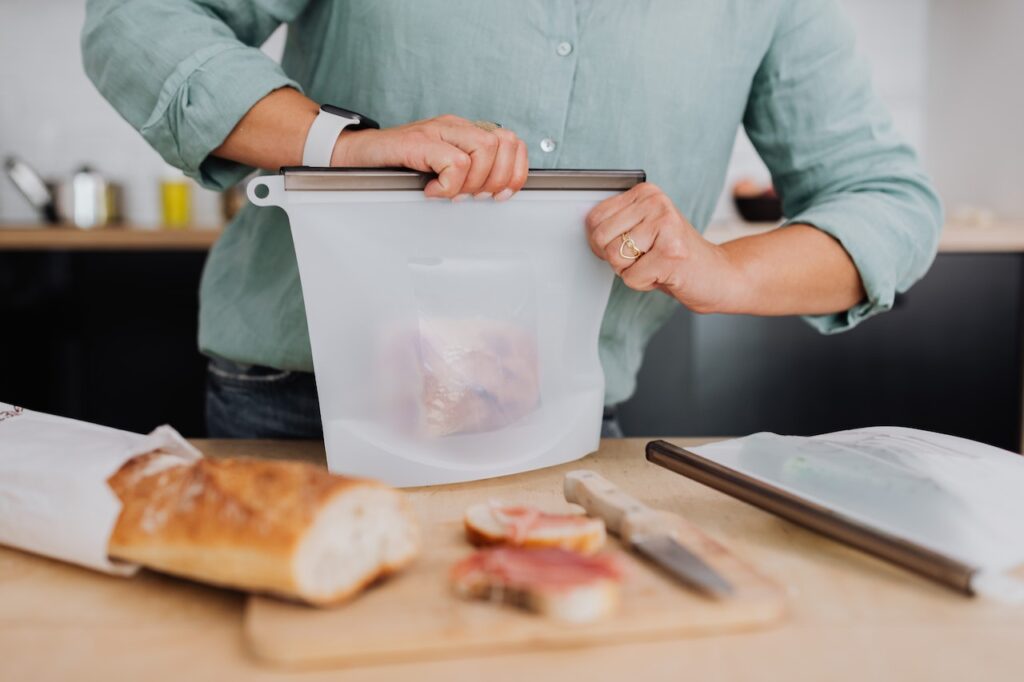As an Amazon Associate we earn from qualifying purchases.
Cooking can often be a therapeutic and a liberating experience. One of the most popular new methods for cooking is sous vide. With sous vide cooking, you can ensure temperature perfect results every time with little oversight.
To this day, there is no chicken breast cooked in my house that isn’t done via sous vide. If you have food that would benefit from perfect temperature cooking, sous vide is the way to go.
Quick Navigation
- How to Use a Sous Vide
- The Temperature Range for This Method
- The Concept of Sous Vide Cooking
- What Can You Make With This Technique?
- Equipment Needed for This Style of Cooking
- Types of Machines for This Technique
- A Word of Precaution
- Why Should You Try This Style?
- Is This Cooking Method Complicated for Novice Cooks?
- Sous Vide Food Vs. Traditional Food
- The Best Sous Vide Machine and Gear
- Conclusion
How to Use a Sous Vide
Sous vide means “under vacuum.” When I cook sous vide, I bag my food, force the air out, and cook the bag in a temperature controlled water bath. With the sous vide method, you can perfectly nail a medium rare steak of any cut or size, and you will be blown away by the texture and incorporated flavors.

This cooking style is not a new concept, and you can prepare many food items with this technique. If you want to try this fantastic method, the first step should be to know how it works.
The Temperature Range for This Method
The temperature for sous vide cooking is low and does not vary greatly for the different types of meats, vegetables, or eggs. While the preparation time varies for the different foods, you can set the temperature between 120⁰-185⁰ Fahrenheit.
For example, when cooking a sous vide steak, the marbled prime-grade ribeye and strip will require a slightly higher temperature. Steaks with higher fat content are insulated, so the cooking time will be slightly longer.
- Very Rare: 120⁰-128⁰F, up to 2.5 hours
- Medium Rare: 129⁰-134⁰F, up to 4 hours
- Medium: 135⁰-144⁰F, up to 4 hours
- Medium Well: 145⁰-155⁰F, between 3-4 hours
- Well Done: 156⁰-185⁰F, between 1-3 hours
Cooking Tenderloin Steaks
Tenderloins are not as fatty and do not get heat from the melting fat for cooking. However, they are easily cooked, which is why they can easily overcook. The optimum range of temperatures for this kind of steak will be slightly lower, while the timing will be the same.
Most people like their tenderloin steak rare to medium rare, which requires temperature ranges of 120⁰-134⁰ Fahrenheit. For a well-done tenderloin steak, you can keep the temperature at 156⁰ Fahrenheit for up to 3 hours.
Cooking Odd Shaped Cuts
Because sous vides cook food evenly to one temperature, one of my favorite uses for a sous vide is to cook weirdly cut meat. Rib tips, tri-tips, or steak tips are perfect for a sous vide. I don’t think I have had a tri-tip cooked in years other than sous vide. Sous vide is the only way to go if you hate having overcooked sides and edges on your meat.
Cooking Chicken
The results are always good when you cook chicken with sous vide because the meat remains tender and does not become chewy. Since the juices remain in the meat, the color may seem unappealing as the meat does not fully darken like in conventional cooking.
The temperature ranges for chicken will be similar to tenderloin steaks. However, the duration can be much less. You can expect a cooked meal within two hours of cooking, and the texture will be juicy and not chewy.
If cooking chicken with bones, keep the temperature above 150⁰ Fahrenheit. Once the juices from the bone begin to run, the meat cooks to a good consistency, and there are no raw parts near the bone. If you see a red or pink color around the bone, don’t worry.
Cooking Eggs
Eggs cook within minutes, and many novice users might need clarification about cooking omelets in a bag! However, if you get used to it, there is no turning back. You can cook various styles of eggs, and they will come out just right. The egg white will be firm, and the yolk will be runny if you want.
The texture of the egg can be altered by the amount of time you give this process. Many people and restaurants use the sous vide method to prepare excellent poached eggs, omelets, and scrambled eggs. You might not get fluffy and shaped eggs, although the taste covers up for that quite well.

The Concept of Sous Vide Cooking
This cooking style allows the food to remain at a constant high temperature so that the flavors are incorporated, and the nutritional value, aroma, and moisture in the food item remain intact. You can enjoy more flavorful dishes; they look like a chef’s creations.
When cooking on flame, the meat can lose its fat content, the vegetables can become soggy and wilted, and the eggs can become too hard. However, this cooking method in a vacuum-sealed bag will ensure that you can eat everything the particular food item offers.
Some people use this method also because it gives them the freedom to do some other work while the food is prepared on its own, and you do not have to watch it or keep stirring. This convenience feature can be attractive to many people.
I have recently been taking my sous vide to holiday dinners, and it is a life saver when there is limited counter space, stove tops, ovens, and grills. With a sous vide setup, you can get a few sides or another main cooking with only the need for a single outlet.
What Can You Make With This Technique?
Sous vide is not limited to making steaks only. Many people believe that all this method can do is make soft, juicy, and tender steaks. However, there are many kinds of dishes that one can prepare with this style of cooking. A few famous recipes using sous vide are:
- Fish
- Chicken or duck
- Lamb meat
- Eggs
- Vegetables
Equipment Needed for This Style of Cooking
This cooking style can work for all tender, succulent, and well-cooked food types. The results will be delicious if you know how to properly follow this technique. The material that you need is minimal:
- High-quality plastic bags
- Vacuumizer
- A large pot or immersion container
- A standing sous vide heater or cooker
Cooks can season the food with spices, oil, and any other ingredient that they want to add. The food is then put into a plastic bag, which is vacuumed properly. This step is most critical, which is why using an automatic vacuumizer will be a good idea.
There is one thing I do not recommend adding to the bags, and that is watery liquids. Adding watery liquid to the bag means you are cooking your food in water which can pull flavor out of the meat. Even large amounts of oil is more like a confit rather than sous vide.
The Immersion Process
The container’s water must be high enough for the bag to submerge. You can preheat it so that the meat, or whatever food you prepare, gets an even cook. The cooking time for different kinds of meats and vegetables can vary.
Types of Machines for This Technique
Professional kitchens have been equipped with sous vide machines for decades. However, they are now becoming more common for home use. While the professional machines can be big and loaded with higher quantities of food bags, you can get smaller versions of these, and they work efficiently too.
Many high-end models are available in the market, while some companies manufacture simpler versions that users can buy for their home kitchens. Social media and cooking shows have played a role in making this style more common.
Immersion Circulator
A stand-alone immersion circulator is a water heater that circulates the water so that your plastic bag gets heated from all sides. You can use this with any pot or container in the house. This setup only takes up a little space and works well.

Water Oven
A water oven is a countertop water bath with a heating system and a big stock pot that can hold water. These ovens do not circulate the water. However, they work well for all kinds of recipes. Although, some people may feel that the results are even.
DIY Cookers
You can create your personal cooker by using the stove or hot plate to heat the water and maintain the temperature. However, sometimes it gets challenging to ensure the bag does not get to the bottom because that has to be hotter.
Keeping the bag underwater and away from the base can be a problem. However, there are many solutions! You can clip the bag to the side of the pot. You can also skew it to a barbeque stick and let it hang in the water.
However, this is only a problem if you use a low-flame stove to maintain the temperature. If you use a hot plate or any other heat source, like placing the pot in the oven, the bag can touch the bottom of the container, and there will be no difference in the results.
Packaging for Sous Vide
The sealing is an integral part of the process because it ensures that the food is in a vacuum. The sealing ensures that there is no evaporation of juices. You can vacuum the bags manually by pressing the bag and then using a straw to remove the air. You can also use a vacuum sealer, ensuring no air is left in the bag.
The various kinds of packaging used for this style of food preparation include:
- Resealable bags and jars
- Silicone bags
- Can jars
- Vacuum-sealing zipper bags
Containers
There is a lot of variety in containers that users can select. Firstly, you can use any pot. However, you will have to ensure that the heat loss from the metal is manageable. You can avoid heat loss in many ways.
Many people cover the pot with a cloth or towel to maintain the temperature easily. Plastic containers are also a good choice; many cookers come with these containers that can hold multiple bags at a time.
A Word of Precaution
When you are using the sous vide technique for the first time, there are a few things that you must ensure. The cookers and containers mentioned above will be easy to set up while the packaging remains crucial. If the bag is not vacuumed properly, it can float.
Since new users may not know this, it is essential to stress that if there is air in the bag or the bag leaks, this style will not work for preparing a recipe. You must keep the bag submerged in water, so the food gets heated consistently.
If you do not take care of the vacuuming process, the results may not be as smooth and precise. The whole technique falls down to the word’s basic meaning, ‘under vacuum.’ If users can vacuum the bag or jar efficiently, there will be no reason for them to see poor results!
The worst case scenario is you puncture or don’t fully seal the bag, and water gets into your food. This happened to my wife and me one Valentine’s Day as I cooked two prime grade rib-eyes. They ended up turning into very mid-grade steaks with a “loose” pan sauce after I tried salvaging the meal due to a leaky Ziplock bag.
Why Should You Try This Style?
The use of precise temperature controls and the constant circulation of water means that you get the same kind of results every time. When you are cooking steaks or chops on an open flame or a barbeque grill, you want them to be tender from the inside and just right from the outside.
The results will often not be the same, and you may have a hard outer crust or a raw center. Similarly, the burnt flavor due to direct grill flame can be a problem. Many health-conscious people want to avoid the carbon from coal-cooked food. Similarly, pan-seared foods can also taste different each time.
When using this French cooking method, users can expect the following benefits:
- Consistency in texture
- Same great taste every time
- Flexibility because you do not have to attend the food
- Waste reduction because there is no loss of moisture from meats, and they do not shrink
Is This Cooking Method Complicated for Novice Cooks?
Novice cooks and homemakers will find this method easier than other ways of preparing meals. First of all, the equipment might sound complicated. Although it is a simple setup, it is not too expensive if you invest in a cooker.
Moreover, the food cooks on its own, and that is a big advantage. The seasoning or marinade goes into the bag with the food, and you must vacuum seal it properly. Once that part is done, everything gets easier.
Cooking without flame and in a bag can be overwhelming for some users. However, once you try it, this method will be much simpler than other techniques that require fire. Additionally, if you get used to no dirty pots and pans, you may want to keep the sous vide cooker running all day.

Sous Vide Food Vs. Traditional Food
The results of conventional cooking depend on various factors. The vessel you use will impact the result because ceramic pans and pots are of different material, while metal pots may sometimes burn some parts of the ingredients it holds.
I am used to this variance of traditional cooking and accept it. However, if you are a professional who has to deliver the same taste every time, or even if you are a customer who expects the restaurant to give you the same taste when you visit, sous vide is the way to go.
Moreover, the sous vide will give better results for some kinds of meats and recipes containing different ingredients. The best example will have to be steaks again, as a pan or grill can char and even overcook the meat unevenly, while this method will give uniform results.
The Best Sous Vide Machine and Gear
Nowadays, there are so many choices that any novice cook needs clarification about the best machine for home use. You can try out various models and brands by following customer reviews on various online shops. However, the ones that garnered amazing reviews include the following:
Monoprice Strate Home Immersion Cooker
This model has been a top-seller for years, and there are many reasons for it, with the price tag reigning over other advantages. It is reliable and easy to use. This makes it a good starter machine for all those who are trying this French cooking style for the first time.
Breville Joule Standalone Cooker
This tall, white, reliable immersion cooker can work with an app to ensure everything goes well while you are not watching it. Moreover, the timing can also be measured from afar. This compact cooker is economical and can change the way you cook.
Anova Sous Vide Cooker
Anova has been a popular kitchen brand, and this cooker has been a revolutionary change. The most popular pick among home chefs, this compact cooker comes with bags and recipes for you to follow. I use an Anova and highly recommend it (it’s been a go-to gift that I’ve given family members over the past years!).
Whichever cooker you choose, this method is quite interesting and can deliver a lot of advantages. Users can easily get used to this convenient and simple style of cooking. You may know a lot of recipes that come out great. However, they may be more complex than sous vide recipes.
Conclusion
If you are wondering how to use sous vide, there are many things to know about this process that will make you want to try it time and again. The equipment is different, although the results of this technique will be the same every time.
